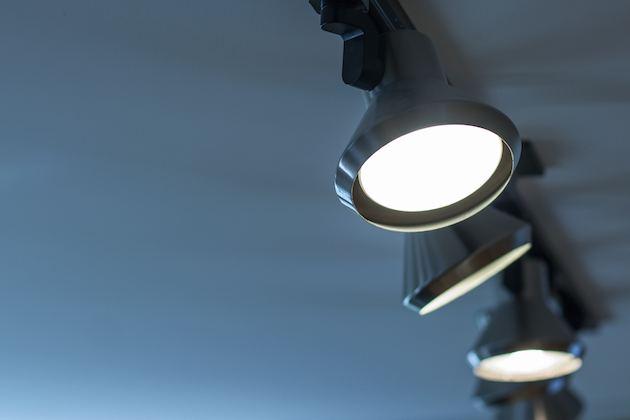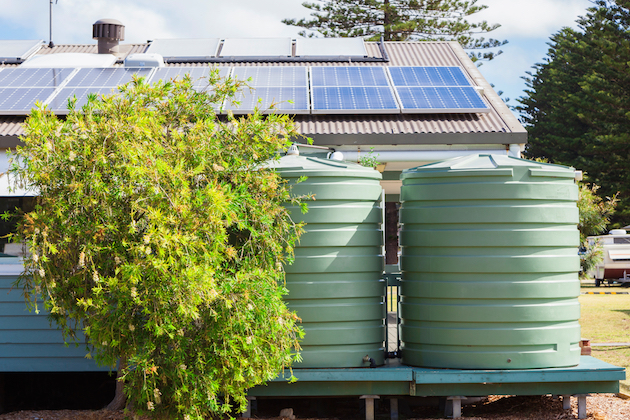20 May, 2020 By: Jane Hammond
Households are responsible for nearly 20 per cent of Australia's carbon emissions - so what we do at home can have a big impact.
Small changes, particularly to the amount of energy you use, can shrink your carbon footprint and save you a substantial amount of money.
The Australian Government's energy website says a family of four can save around $760 a year by making a few simple changes.
It says getting rid of a second fridge could save an estimated $172 a year, while turning off a game console after use would save $193 a year.
Using a washing line instead of a clothes dryer just once a week would result in a saving of $79 a year. Meanwhile, a massive $315 a year can be saved on water bills by installing a 4-star water efficient showerhead, which would set you back around $150.
While these costs are only approximate and depend on factors such as the age of your appliances and the size of your home, they demonstrate the sort of savings that are possible with little or no investment.
Katy Daily from Renew, an organisation helping Australian households live more sustainably, says that while many of us have already embraced recycling and waste reduction, there are many other simple ways to reduce our carbon footprint at home.
"Improving your energy use at home can save your wallet as well as provide you with more comfort," Daily says.
Bringing down your power use is one of the easiest ways to save money and can be done with a few basic changes in behaviour like switching off appliances at the wall or switching off lights when not in use.
Daily says conducting a simple "energy audit" or review of your energy use can help you see where your energy is going and how much you might be able to save by changing the way you do things.

Money saving tips - free or very low-cost changes
A good way to start your energy audit is with the help of a plug-in power meter. This simple device measures the amount of energy each appliance in your house uses. Power meters can be purchased for around $25.
A simple check with a power meter will show you which electrical goods are chewing up the most power in your home. It will also let you know whether any of your older computers or TVs are energy 'vampires' - appliances that consume a lot of energy when not in use.
Many newer household appliances also use a significant amount of energy while waiting on standby. Using a power board for electrical goods can make turning them off at the wall quicker and easier. Smart power boards can even be programmed to reduce energy use by switching appliances off automatically when not in use. These start at around $40.
The seal on your fridge is another easy thing to check as part of your energy audit. If you can feel any cool air escaping from the fridge then you probably need to replace the seal. A new seal will cost around $60 and will extend the life of your fridge while also reducing its running cost.

A similar check should be made on the oven seal. If air is detected coming out of the oven during cooking, then the seal may need to be replaced. A new oven seal costs around $40.
Another easy thing to check is whether your fridge has sufficient clearance on all sides to run effectively. It should have at least 5cm clearance at the back, sides and top.
A typical family of four will open the fridge 20 times a day. Minimising the time the fridge door is left open will ensure it's not wasting energy compensating for the loss of cool air caused by frequent or prolonged opening.
Daily says making sure you cook multiple dishes while your oven is running is a free way to make the most of the energy it uses. For example, if you are baking lasagne, use the second shelf to bake some cookies.
Water heating accounts for around 25 per cent of the energy costs in the average home. Savings can be made fairly easily by washing clothes in cold water and setting your hot water system's thermostat to 50 degrees. This also ensures you won't get scalded when you use a hot tap. You also won't have to waste water using the cold tap to get the overall temperature down when you shower or wash your hands.
Enjoying this article?
Sign up to our monthly enews
Daily suggests wrapping pipes in insulating material to slow the loss of heat as another way of cutting your power bill.
Other simple ways to cut power use include using a lid to cover your pots on the stove when bringing water to the boil for cooking; keeping window shades down and doors closed when not in use to save heating and cooling costs; and draught-proofing your doors, windows and skirting boards.
Small to medium investments
Daily says halogen downlights, popular some years ago, should be avoided and replaced by the longer lasting and more economic LED lights.
Changing your halogen downlights to LEDs can be easily done by a licenced electrician and costs around $40 for each, plus labour.
"LED lights use about one fifth of the energy of a halogen downlight," Daily says.
The compact florescent lights that replaced the old-fashioned iridescent lights should also be avoided. Compact florescent lights contain mercury which makes them hazardous if broken and a toxic contaminant if they end up in landfill.

She says taking the time to choose energy-efficient appliances also helps bring down power consumption in the home.
Appliances consume around 30 per cent of the home's energy, so choosing new appliances wisely makes good economic sense.
Reducing your water use will also help save money and make your home more sustainable. Simple methods for cutting back on your water use include installing a dual flush toilet and low flow taps.
The Water Corporation estimates that a dual flush toilet can save up to 90 litres of water a day or 33,000 litres a year over a single flush system. That's enough water to fill a backyard swimming pool. Updating your toilet will cost around $400 including installation.
Low flow taps work by mixing air with water flow to give the impression of full water flow. They start at around $11 and can make a huge difference to your home water use and the size of your water bill.
RELATED:
How to make your home more sustainable »
Larger investments in sustainable retrofitting
Ken Higgins from Complete Enviro Solutions says four big ways to make a home sustainable are the addition of a rainwater collection system, a greywater diversion system, solar panels and a heat pump hot water system.
He says all four elements can be added to a new home build for around $17,000 and while the additional costs seem high, the investments are quickly recovered in reduced power and water costs.
But there are also many ways to refit an existing home to make it more sustainable, solar panels being the most popular example.
"It's usually possible to retrofit existing homes with some sort of greywater system," Higgins says.
"The cost will be dependent on what changes are required to the existing plumbing, but a whole of home system could cost between $6,000 and $7,000."

Higgins says using an electric heat pump hot water system is a great way to maximise the use of solar panels on the roof.
Heat pump systems cost around $2,800 and work like a refrigerator in reverse.
Daily says it's important that consumers educate themselves about advances in technology so that when they are faced with an emergency purchase, such as a new hot water system, they're aware of all the options and are well armed to make the right choice.
From small-scale changes, such as smart power boards and switching off lights, to investing in big-ticket items like greywater irrigation systems, there are a variety of ways any household can make their home cheaper to run and more sustainable.
Inspired to save on your next power bill?
RAC members can save up to 38% on natural gas usage charges with Kleenheat.
